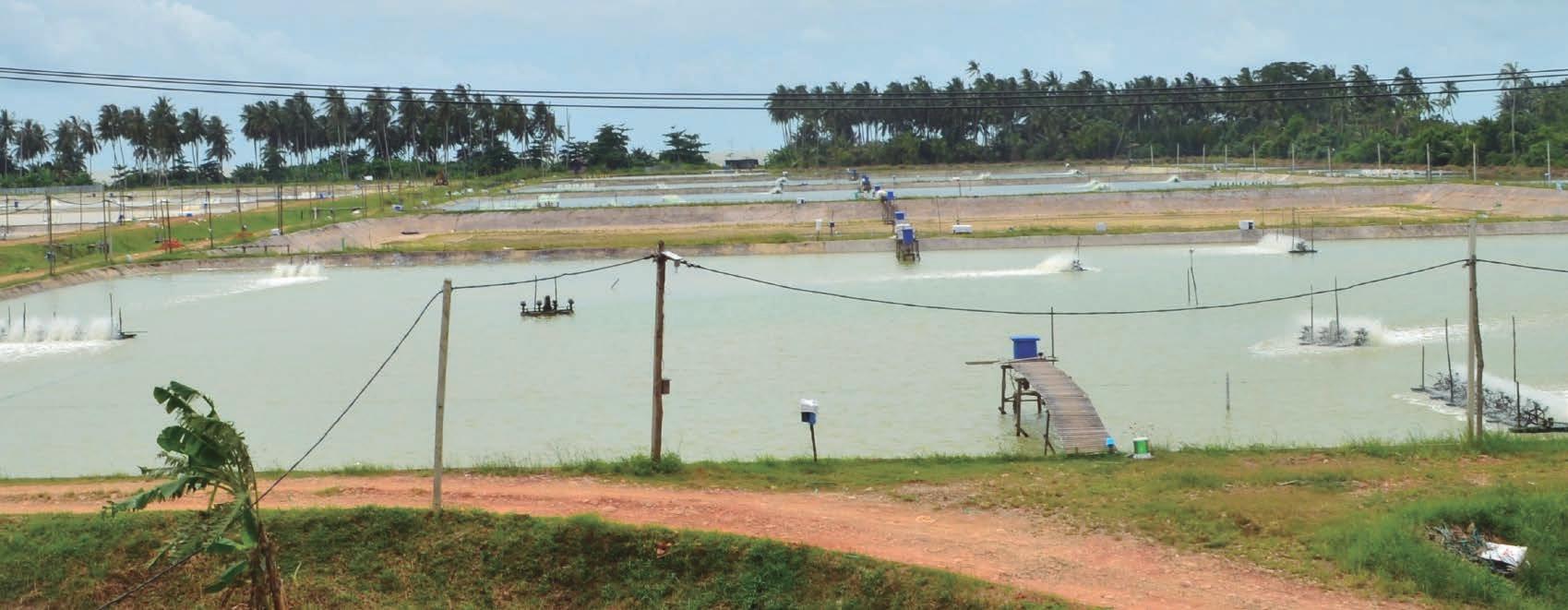ARTICLE
Bacterial Community Dynamics During Nursery Rearing of Pacific White Shrimp (Litopenaeus vannamei)
Revealed via HighThroughput Sequencing
By: Maocang Yan, Xiang Zhang, Lihua Hu, Xianke Huang, Qianjin Zhou, Guoquan Zeng, Jiongming Zhang, Guoqiang Xiao, Xueliang Chai, Jiong Chen*
Introduction Pacific white shrimp (Litopenaeus vannamei) culture has been rapidly increasing for two decades, with an annual percentage of 8.1%, compared with 0.62% for capture fishery and 2.6% for meat production. The L. vannamei nursery phase (approximately 20 days after hatching) is a key step in the shrimp production cycle. Many infectious diseases preferentially affect larvae, resulting in high mortality, generally attributed to opportunistic pathogenic bacteria. These bacteria are common in the seawater and feed that are used in hatcheries and, during metamorphosis, shrimp are susceptible to pathogenic Vibrio. Shrimp larvae encounter the ambient bacterioplankton immediately after hatching. The nursery phase can be divided into two stages: metamorphosis (including Nauplius, Zoea, 26 Âť
Researchers from the Zhejiang Mariculture Research Institute and the Nigbo University recently published a study that originates from the knowledge that the morphological and physiological characteristics of L. vannamei change dramatically in early development, leading to high variability in nursery rearing. The dietary patterns of shrimp larvae also change with the different developmental stages. The hypothesis of the study is that these stages may have their own pattern of bacterial community composition in the nursery rearing environment. And the obtained results add to the current understanding of the relationship between environmental microbiota and the nursery stage of shrimp larvae in aquaculture using high throughput sequencing. and Mysis) and the postlarval stage. The morphological and physiological characteristics of L. vannamei change dramatically in early development, leading to high variability in nursery rearing. The dietary patterns of shrimp larvae also change with the different developmental stages. The microbiota associated with L. vannamei, such as gut and environmental microbiota, has been studied extensively. Previous studies have also supplied further understanding of the gut microbiome in postlarvae of the nursery period. However, most of the shrimp in these studies were postlarvae (age from Day 42 to Day 115) or older shrimp. The metamorphosis period (Day 0 to Day 20) has not received much research attention, and there is limited information about the bacterial community associated with L. vannamei larvae during the metamorphosis stage. Since the
ambient bacterial community influences aquatic animals, the characterization of environmental microbiota would be an initial step for improving shrimp production. Given that the aquaculture environment is closely associated with the different stages of metamorphosis of larval L. vannamei, we hypothesized that these stages may have their own pattern of bacterial community composition in the nursery rearing environment. To test this hypothesis, we explored the dynamics of bacterial communities during nursery rearing of L. vannamei larvae. In this study, we characterized the ambient microbial communities associated with the nursery phase of larval L. vannamei through high-throughput sequencing of the V4–V5 region of the bacterial 16S rRNA gene to characterize bacterial diversity and community structure. APRIL - MAY 2020







